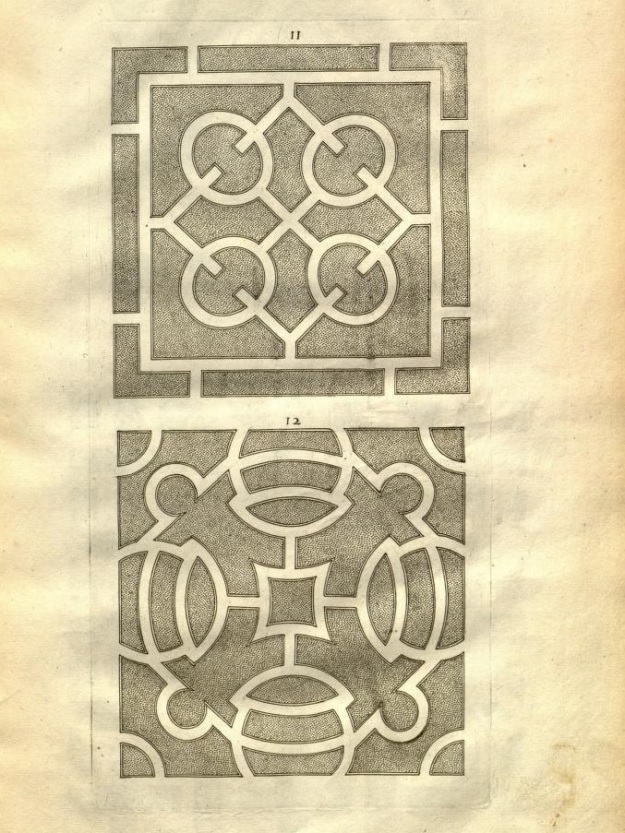
To understand how a gentleman’s garden might have looked in the mid-17th century, John Rea’s book is a good starting point. The gardens described are intended for the gentry and possibly the upwardly mobile, (maybe someone of the means and career trajectory of Samuel Pepys). Rea gives instructions for the construction of a fashionable garden to complement a country house, with areas for fruit, vegetables and flowers, which can be scaled up or down depending on the size of the building.
Rea describes himself as a ‘florist’; not an arranger of cut flowers as we understand the term today, but more of a horticultural expert who grew plants for sale and knew how to plant up gardens.
As well areas for growing plants, Rea recommends two essential buildings; an octagonal summer house for entertaining, sheltering from the rain, or sorting through tulip bulbs and a separate store for tools.
The ‘Draughts for Gardens’ which follow are designs for a flower garden, and show geometric beds (the darker areas, which Rea calls ‘Frets’), with gravel pathways between them. The beds would have been edged with painted wooden boards or with French box, which Rea points out would take about three years to reach maturity and would need to have their roots pruned from time to time, to stop them taking too much goodness from soil and the rest of the plants.
For those who already have an enclosed garden, Rea explains that these designs can be altered to fit the space available
‘And because divers have Gardens already enclosed, that the measure of the forementioned Fret will not fit, I have therefore designed Draughts of several sizes, that every one may take that which best agrees with his ground, and is most proper for his purpose;’
Do the patterns suggested for the flower gardens have a meaning? According to Rea the arrangement of the flower beds are supposed to represent jewel boxes, with the flowers as the jewels. Reas describes the ‘draughts’ as fashioned ‘in the form of a Cabinet, with several boxes fit to receive, and securely to keep, Natures choicest jewels.’
Rea’s planting suggestions for the ‘jewel box’ gardens appear throughout his text and include the flowering plants that were most prized at this time. Rea encourages the garden owner to consider the balance of plants when planting the beds.
‘Now for planting the Beds in the Fret, you must consider every piece, and place the Roots so as those of a kind set in several Beds may answer one another; as in the corners of each Bed the best Crown-Imperials, Lilies, Martagons and such tall flowers; in the middles of the five Squares great Tufts of the best Pionies, and round about them several sorts of Cyclamen; the rest with Daffodils, Hyacinths and such like: the streight Beds are fit for the best Tulips, where account may be kept of them: Ranunculus and Anemonies also require particular Beds; the rest my be set all over with the more ordinary sorts of Tulips, Fritillaries, bulbed Iris and all other kinds of good Roots, in such sort you will find directed where they are described.’
Could these designs be used as inspiration for a modern looking garden in a historical setting? The designs have a scale and authenticity which would match a 17th century house, and there’s no reason why the planting couldn’t be updated, using the perennials and grasses that we like now. Or perhaps elements could be used; the edging of one of the designs could be introduced somewhere in a modern garden making a link back to the jewel gardens of the past.








A link to Rea’s book at the Biodiversity Heritage Library:
http://www.biodiversitylibrary.org/bibliography/50878#/summary
Brian Stephens’ biographical essay on the life and work of John Rea:
http://www.wyreforest.net/2014/01/02/john-rea-florist-of-kinlet-1605-1677-brian-stephens/
